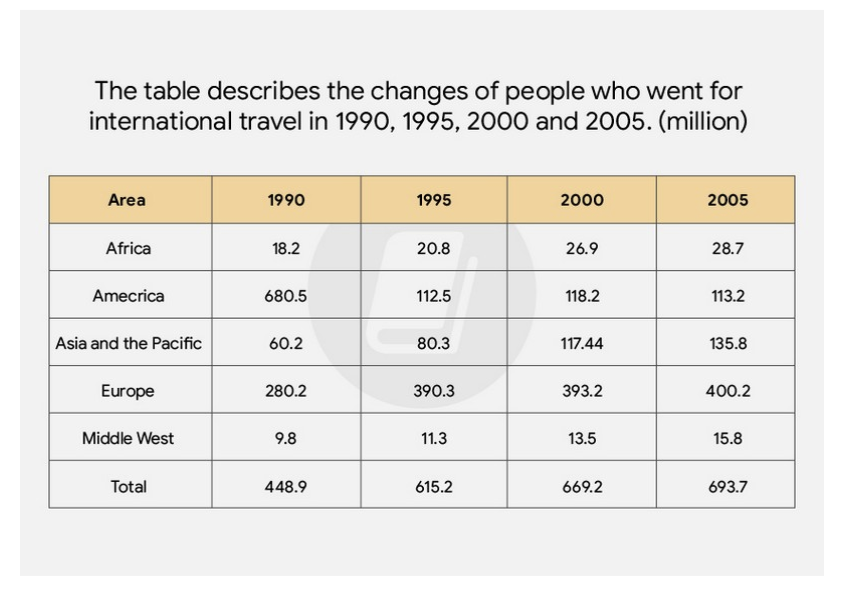HomeWriting
The table describes the changes of people who went for international travel in 1990, 1995, 2000 and 2005 (million)
2024-07-24
The provided table depicts the global trends in international travel, showcasing the number of visitors from different regions in 1990, 1995, 2000, and 2005.
Overall, there was a substantial increase in the number of people undertaking international travel during the specified years. Europe emerged as the region with the highest influx of visitors, while the Middle East recorded the lowest figures.
In 1990, America led in international travel, with 680.5 million travelers, followed by Europe and Asia and the Pacific, with figures of 280.2 million and 60.2 million, respectively. Additionally, 18.2 million people from Africa engaged in global travel, while the Middle East saw only 9.8 million, half of Africa's figure
Over the next 15 years, the number of visitors from Europe witnessed a significant surge, reaching a peak of 400.2 million in 2005. During the same period, there was a rapid increase in the number of people from Asia and the Pacific traveling abroad, rising from 60.2 million to 135.8 million in the final year. Conversely, the figures for Africa and the Middle East increased only slightly. In contrast, the number of people traveling overseas from America fluctuated, going from 112.5 million in 1995 to 118.2 million in 2000 before declining to 113.2 million in 2005.


